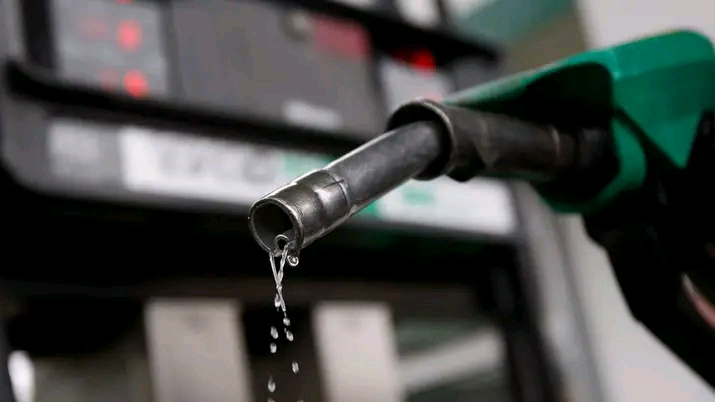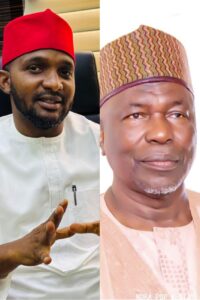
By Bilyamin Abdulmumin
Since the return of democracy in Nigeria, successive governments have been contemplating the removal of fuel subsidies. The then government of President Olusegun Obasanjo saw multiple fuel price hikes, from the 20 nairas per litre it inherited from the transitional military government to the last fuel hike that was particularly unforgettable. In 2007, two days before the expiration tenure, OBJ jacked up the pump price from 65 to 75 naira per litre. However, the incoming president Umar Musa Yar’adua brought the honest nest back to order. The next struggle to remove fuel subsidies, perhaps the biggest standoff, came in 2012 during the government of Good Luck Ebele Jonathan. Vibrant labor, trade, civil and student unions, and agglomeration of opposition descended on the government for the decision, forcing GEJ to lower the price from the initial 141 to 97 and later in 2015 to 87 naira per litre. The struggle would continue, as soon as GMB ascended to power, he greeted the public with partial subsidy removal, taking the pump price from the official 87 naira to 145, before hitting 187 at the end of his tenure. But all out on fuel subsidy removal came during the run-down to the 2023 general election where all the major presidential candidates dismissed any doubt left on fuel subsidy. They all warned the electorates, point black that they would remove fuel subsidies, so President Tinubu would walk the talk even from the inaugural stage.
The government and subsidy removal activists’ argument is that an unbelievable amount of funds are being poured into the scheme, while the national infrastructure languishes in bad condition. The large amount spent on the subsidy has been said to reach this height dubiously no thanks to inflated numbers by some unscrupulous officials and the diversion of subsidized fuel to neighboring countries by some rogue marketers. To add insult to injury, Nigeria borrows to sustain this counterproductivity. Although this argument is plausible, but instead of throwing a baby with bath water, why not the government sanitize the scheme so that it brings the amount to within its capacity?
Another pro subsidy removal argument was that only a few rich Nigerians benefit from the subsidy, the poor masses who were the target of the scheme are not benefiting the way it is supposed to. This slogan is challenging to explain to people; which ‘the poor masses are not benefiting the way it is supposed to’? When people can visibly see the effects of the subsidy when they buy fuel. No answer is as crunching as for a Nigerian to enter a filling station and after buying an expensive fuel he declares, they said we don’t benefit from subsidy!
GMB and APC supporters have an additional puzzling dilemma to unravel because GMB had outrightly opposed the plan in 2012 when President Goodluck Jonathan mulled the idea of its removal. GMB and other APC chieftains famously proclaimed ‘over their dead bodies’ would they allow it. Meanwhile, we by the side of the TV screen threw roses at them. So, one of the top Buharist El-Rufai’s tried to rescue the situation in the aftermath of the then PMB’s backpedal. According to an accidental civil servant: ‘When fact changes, decision changes.’ This was to defend the then PMB decision even though he opposed it earlier. This philosophy quite convinces me, I said yes Elrufai has rightly arranged the pieces together. But one of my friends would make my life miserable, he said the same philosophy could also be applied to Jonathan as his reason behind fuel subsidy removal. I became speechless.
The speed with which the marketers change fuel prices immediately after price changes from NNPC (Nigerian National Petroleum Corporation), regardless of what’s in their stock, whether old or new, is perhaps the biggest showdown between the public and marketers. As soon as NNPC announces a new price, marketers countrywide change the price in the blink of an eye. The public argues that since the new price is for the new product, the marketers with the old product should stick to the old price. One Sheik brought this public sentiment to the fore when he calculated the difference between the old price and the new price and multiplied that by a presumably large number of liters for one marketer. The profit he got was staggering, about 300 million nairas.
I share this public sentiment, and I, too, initially thought the marketers were doing it illegally until Mele Kyari explained it on BBC Hausa Ra’ayi Riga. According to the NNPC MD, marketers have to sell their old products at a new price. This approach enables them to recoup their old investment. For instance, if a marketer had 100 liters he had to sell them at a new price so that he could buy the same amount, but if he sold them at the old price of 250 naira, he would not be able to buy the same 100 liters of new product at a higher price.
This is a plausible reason from a market viewpoint, what of the masses? because while the market provides safety measures for marketers, it does not offer the same to the general public, especially the poor. Economics and the related professionals’ expertise is needed here, they should help us find balances between these conflicting but appealing arguments.
Although it could be too late to cry when the head is chopped off, but whenever it comes to subsidy removal or any government policy implementation, Nigerian policymakers may need to learn from thermal shock phenomena. Thermal shock is a situation a material experiences when exposed to sudden changes in temperature conditions, it can lead to the material cracking or even breaking down. Take a glass cup of tea for instance. If the tea glass cup is really hot and you suddenly put it in cold water in order to cool the tea inside, the glass may crack or even break depending on the level of the thermal shock, but to cool the tea inside the got glass cup successfully without harming the glass, you apply gradual cooling, first, you put the glass cup in warm water then gradually reducing the temperature of the water until become cold, in this way, the tea inside the glass cup can cool without causing any injury to the glass.


